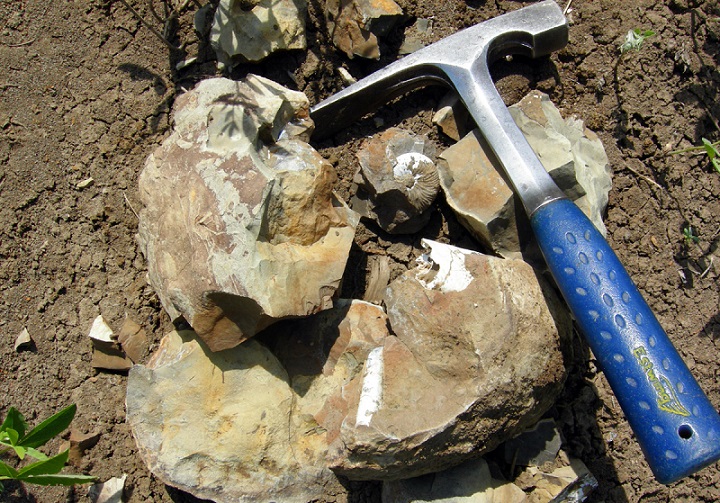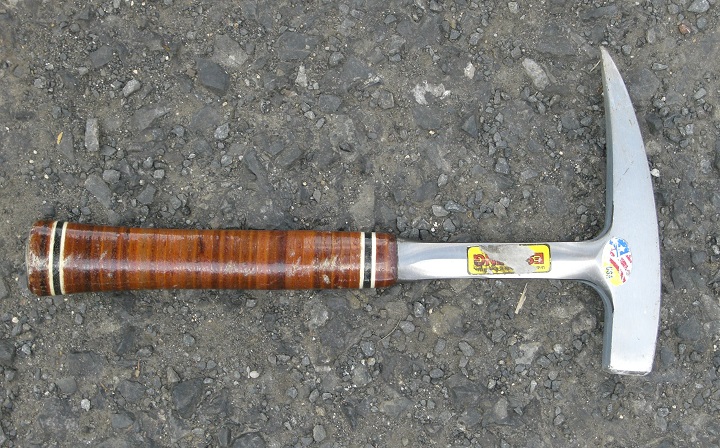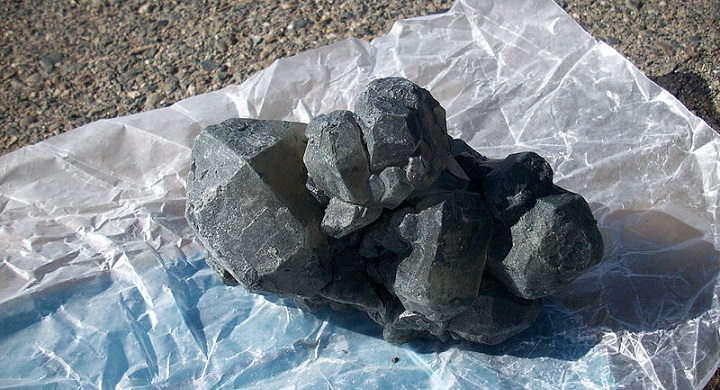Are you interested in taking up gold prospecting and mineral collection as a hobby? Then you are most probably wondering what could be the best rockhounding tools for the job. The truth is using the right tools to collect minerals can be a fun and rewarding exercise.
Depending on the kind of minerals you are interested in you may need tools such as shovels, buckets, gloves, sluice boxes, sledgehammers and hard hats among others. The following are the standard tools you will need before heading out to the field.

Rock Collecting Tools
These are the rockhounding tools you need so that you can collect the minerals from hard rocks and deep into the ground. They include:
Hammers
Most rockhounding and geologist’s activities involve breaking the ground and hard rocks to get the collectible minerals. Here hammers are very useful as they provide the required force to make rock breaking possible. There are many types of hammers that you should consider buying. Some of the must have hammers include:
Sledge hammer: A sledge hammer has a long handle and is considerably heavy. It is used to break bigger rocks into much smaller once. It is essential when working on a site with many big and hard rocks that require more force to be broken down.
Crack hammer: This is a much smaller hammer when compared to the sledge hammer. It is used to break medium sized rocks into smaller rocks. In addition, it can be used to drive chisels into rocks so that you can collect the rock samples.
Geologist’s Hammer: A geologist’s hammer is made with a pick on one side. The hammer is useful in breaking rocks and for prying rocks out of the ground.
Brick layer’s hammer: A bricklayer’s hammer is much similar to a Geologist’s hammer only that instead of a pick it has a chisel on one of its ends. It is useful for splitting soft rocks and can also be used as a chisel.

Chisels and gad points
Chisels are quite important in breaking rocks to get the minerals out. There are many types of chisels that you need before heading out to the field. Depending on the minerals you are interested and the kind of field you are working on, you will need chisels of different sizes and lengths. This is important as you may need to work on different sizes and types of rock on the same size.
Pry Bar or Crow Bar
This is a lightweight bar and is pointed at one end. This rockhounding tool can be used for many things including breaking boulders, breaking specimens and searching dumps among other uses.
Paint Brush
Quite often precious minerals are hidden in dust and other dirt in rocks. Having something such as paint brush to remove this dirt so as to expose the specimens can be quite useful especially when you are working in an old mine dump. The paint brush is also useful for cleaning the collected specimens. A small broom may also be beneficial.
Pocket Tools
These are important tools for retrieving minerals from mineral field pockets. The tools are narrow and long such as a long screwdriver or an ice pick. For gold prospecting a hooked crevice tool can be very helpful.
Fine Work Tools
You may also need to cut, clean and analyze your specimens on the site so as to avoid carrying a heavy load. This requires additional tools such as palette knife, sieve, spatulas, dental pick and surgical knife.
Other tools
Depending on the kind of site you are prospecting you may require additional tools such as shovels hoe and trowel among others.
Transportation Tools
You need somewhere to carry all your tools to and from the site and in addition, to all carry your specimens from the site.
Internal Frame Backpack
You need to carry your tools to the site and back. This is where the backpack comes in. a good backpack should strong and durable and should help you carry all your tools at once.
Collecting Bag/tubes/boxes
These are essential if you are collecting fragile minerals that have to be carried separately so that you don’t damage their structure.
Bucket
This is important for carrying sharp tools and rocks. A bucket helps protect your backpack fabric from damage that may be caused by sharp tools and extra specimen you have to carry from the site.
Personal Safety Equipment
Heavy gloves
Gloves protect your hands from injury caused by sharp objects in your working area
Safety Goggles
When you have to work with hammers and chisels to break rocks you need to protect your eyes from flying rock pieces. Safety goggles are important as they cover your eyes and offer protection. The can also fit over your glasses and thus are more ideal even when you need prescription glasses to see clearly.
Hard hat:
A hard hat is important to protect your head from falling objects especially when you are working in a tunnel or in a deep ditch.
Sturdy boots:
Most collecting areas have sharp rocks and other hazardous objects that require that you protect your feet and toes from injury.

Other Requirements:
For your personal well-being, you also need to have insect repellents, sunscreen, first aid kit, drinking water and food among others.
Specimen Identification
To avoid carrying a heavy load of materials from your prospecting site, you need to be able to identify various specimens on-site. The following will help you greatly with the identification.
Field guides:
Depending on the minerals you are interested in, find a field guide with clear pictures and proper description of the specimens to help you identify them.
Magnet/metal detector:
If you are hunting for iron-bearing rocks or meteorites then a magnet or a metal detector will help you greatly in identifying the specimens.
Streak plate:
When a rock is rubbed on a streak plate it creates a distinctive color that may help identify specimens.
UV lamp
A UV lamp isn’t a rockhounding tool that everyone will need, but it is important for identifying fluorescent minerals.
Hand lens
Mineral collection often involves looking at and analyzing very small crystals. Hand lens came in very handy when determining the kind of minerals you have. Depending on the minerals you are interested in you can have any kind of hand lens that are of good quality. A 40x jeweler’s loupe is a good choice.
Record-Keeping and Navigation Tools
Most mineral collecting sites are in remote areas and mostly in woodlands. What this means is that you can easily get lost. You need navigation tools to help you move around. In addition when collecting rocks and when hiking you need to make notes so that you can refer to them later:
Maps and guidebooks:
Maps and guide books provide a detail illustration of the sites location. They show all the major routes to and from the site and give more details about the topography of the area.
Camera:
A camera is important as it will help you take pictures of the site, the mineral bearing rocks and the specimen you collect.
Notebook and pen:
This is a pretty basic rockhounding tool, but you need to keep a record of the specimen you collect and in addition when you are moving along a river or an extended collection site with different minerals you will want to record the location with various minerals so that you can come back to such sites later.
Masking tape:
To help you label the minerals that you collect.
Permission to collect:
This is important because you not collect minerals on private land or even in protect packs without permission from the owners and the relevant authorities.
Next: The 4 Best Gold Panning Kits on the Market
And: 15 Metal Detectors that Will Find Gold Nuggets







